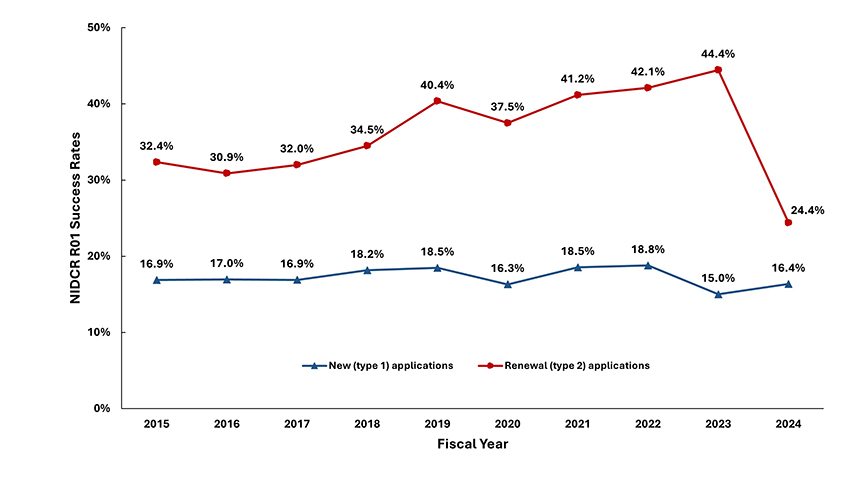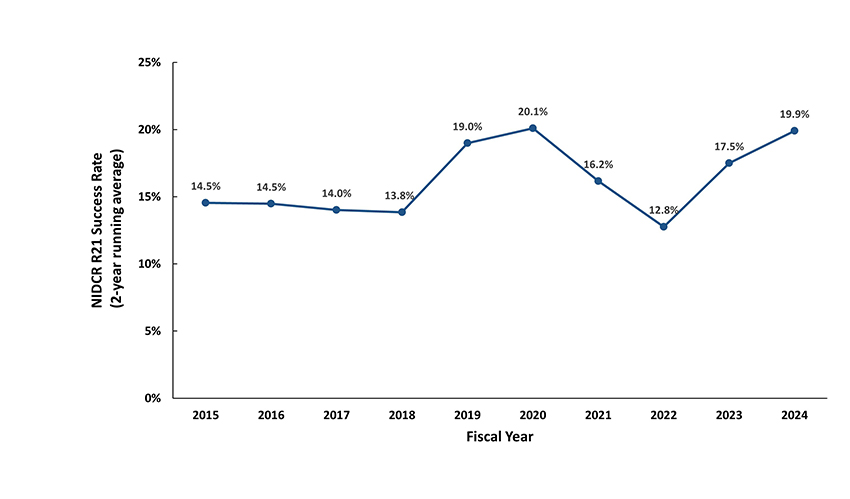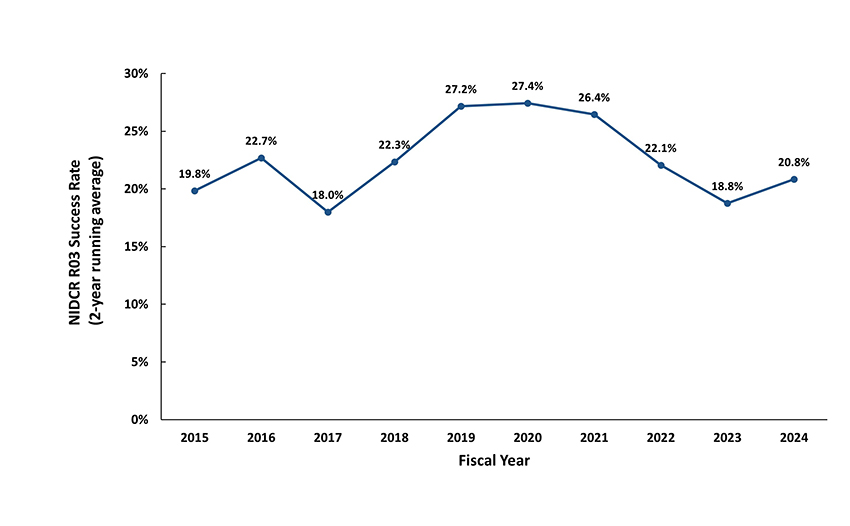Research Project Grant Application Success Rates
Research Project Grant Application Success Rates
NIH uses success rates as a metric for describing the likelihood of a project getting funded. Success rate is defined as the number of awards divided by the number of unique applications in a fiscal year. Below, we provide NIDCR success rates for R01, R03, and R21 research project grant applications. For more information on NIH success rates please visit NIH Research Portfolio Online Reporting Tools (RePORT) Success Rates webpage.
NIDCR R01 Success Rate
NIDCR R21 Success Rate
NIDCR R03 Success Rate
August 2025



